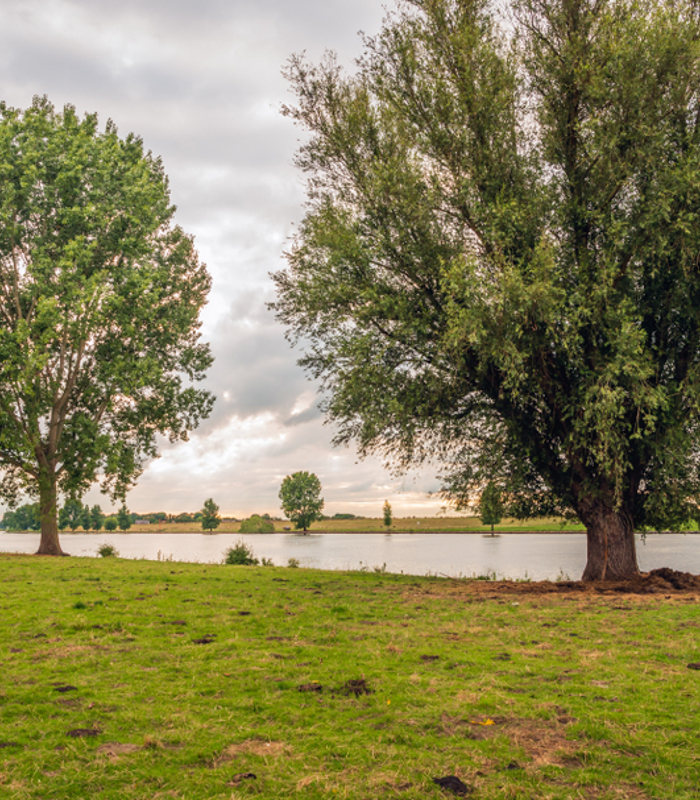If you ever drive, walk or cycle along the Maas, then there is something you cannot miss: the ash and poplar trees towering above the unique landscape. What many people don’t realise is that these marker trees, the so-called ‘bakenbomen’ make up one of the longest green structures in Europe, characteristic of the Maas. A valuable 100-kilometre-long ribbon, crossing the entire Netherlands, from Limburg in the south-east to National Park ‘De Biesbosch’ in the west. But the marker trees and hence this impressive structure, are threatened with extinction.
Discussions with responsible parties
On behalf of the Province of North Brabant, three students from the HAS University of Applied Sciences’ study programmes Geo Media & Design and Spatial & Environmental Planning are currently working on their thesis, developing a strategy to maintain the marker trees and the characteristic landscape along the Maas. In the past few weeks, students have been holding discussions with responsible parties such as provinces, local councils, regional water authorities and Rijkswaterstaat (the Dutch Ministry of Infrastructure and Water Management). They are using the results of these meetings to develop a vision for the marker tree structure. Together with an organisational model, financial plan and monitoring system, they will present their vision in an advisory report.
‘Bakenbomen’: iconic trees
The Dutch river landscape is unique. Open with a distant horizon, the dynamism of shipping and changing water levels, but also calm and spacious. The marker trees are a defining part of the landscape along the Maas. They were the final element in the canalisation of the Maas, marking the new waterway for inland shipping. They were planted around 110 metres apart between Boxmeer and Geertruidenberg on both sides of the river.
Many trees have disappeared
The trees are now so old that they are slowly starting to die of old age. In addition, during recent decades, trees have also disappeared as the result of nature development projects, leading to large gaps in the ribbon of marker trees. If nothing is done, we will lose something of significant value in cultural-historical, landscape and ecological terms.

